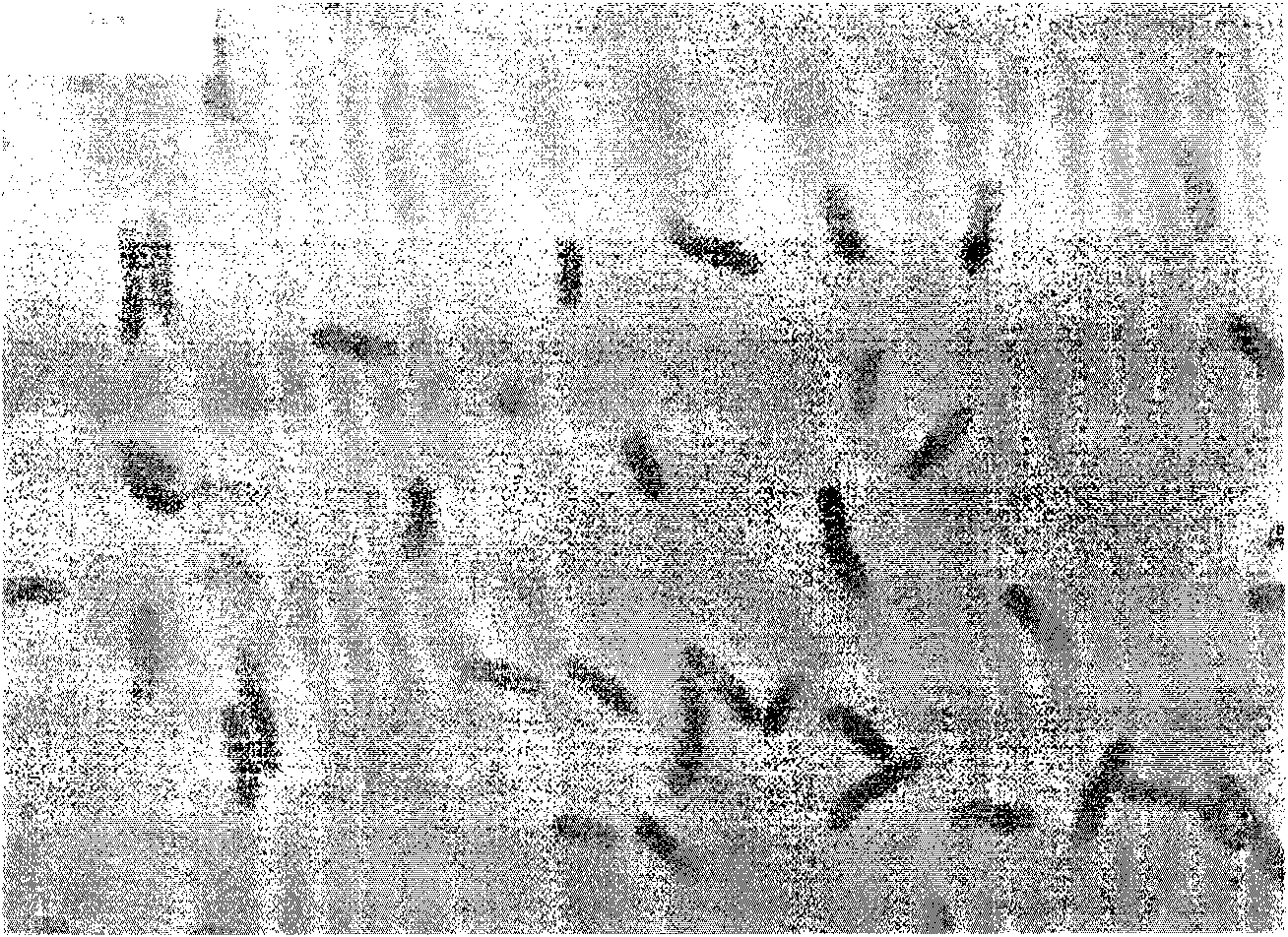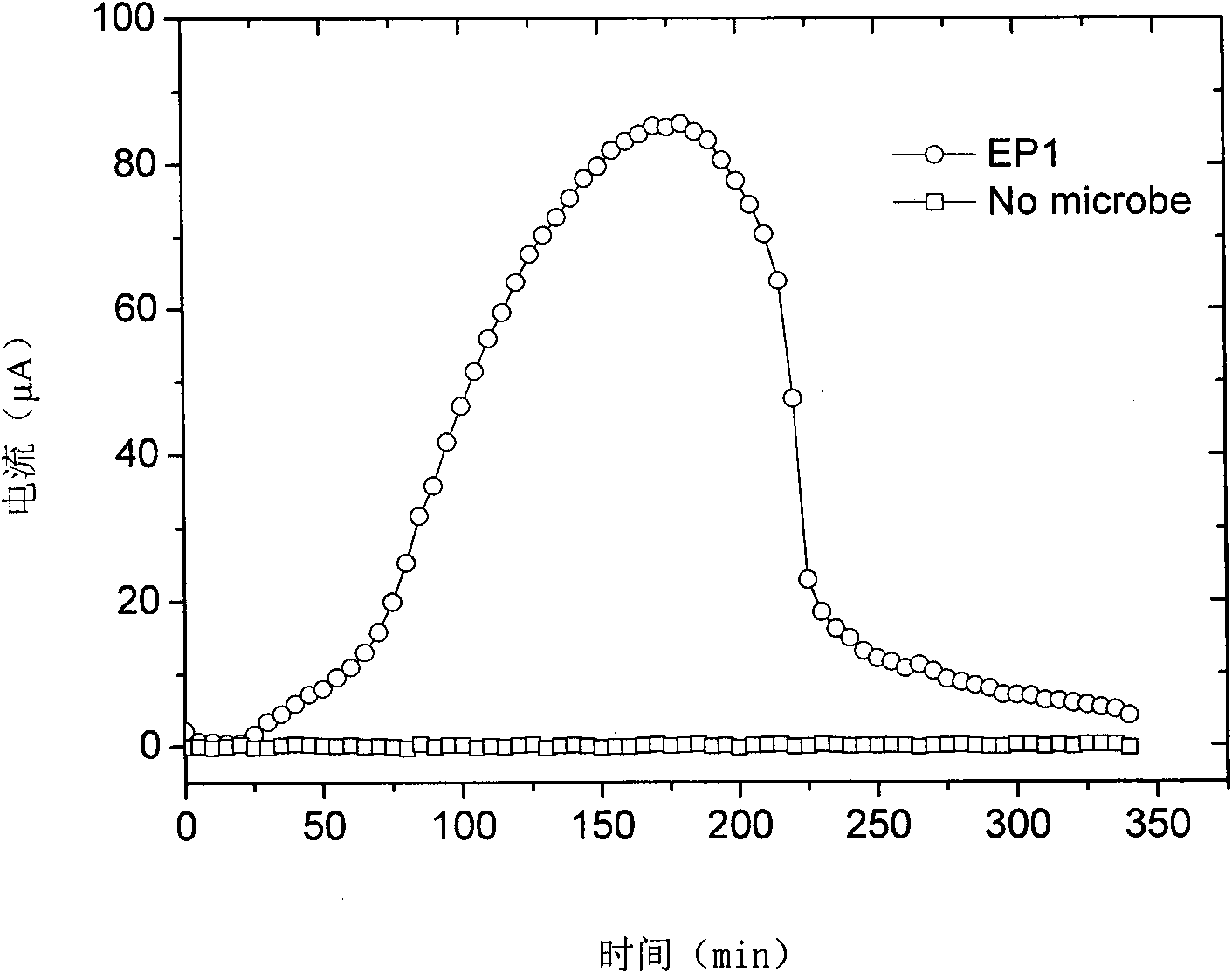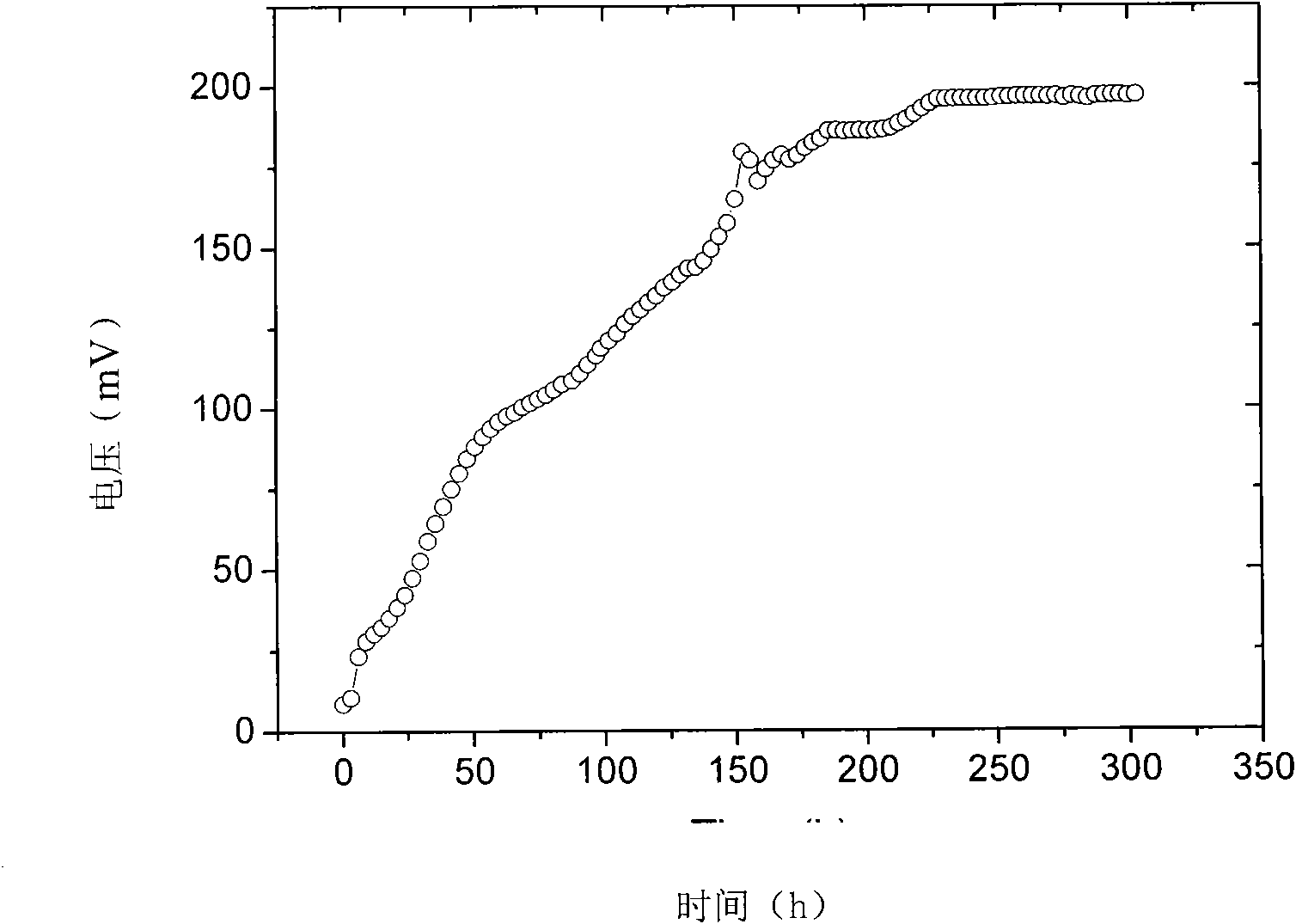Shewanella and application thereof in microbiological fuel cell
A technology of Shewanella and fuel cells, applied in the biological field, can solve the problems of microbial fuel cells such as lack of power generation efficiency and long-term stability, research sluggishness, etc., to achieve wide salt ion concentration tolerance, high power generation activity, broad Effect of Salt Ion Concentration Tolerance Activity
- Summary
- Abstract
- Description
- Claims
- Application Information
AI Technical Summary
Problems solved by technology
Method used
Image
Examples
Embodiment 1
[0064] Embodiment 1: Screening of EP1 bacterial strain
[0065] Marine sediment samples were collected from the bay near Xiamen, China. Take 2 grams of soil samples and suspend them in 250 milliliters of microbial fuel cell anode electrode solution for enrichment culture. The composition of anolyte medium (MM1) is: 1000 milliliters of deionized water, 1.30 g K 2 HPO 4 , 0.45g KH 2 PO 4 , 0.19g (NH 4 ) 2 SO 4 , 0.25g MgSO 4 , 10ml Wolfe's Minerals, 0.05g CaCl 2 , 0.02g L-arginine, 0.02g glutamic acid, 0.02g serine and 0.10g yeast powder, wherein 10mmol / L of sodium lactate (DL-lactate) was added as an electron donor. The composition of the catholyte of the fuel cell is the same as that of the anolyte except that no amino acid and yeast powder are added, and corresponding sodium chloride is added to the catholyte to balance the osmotic pressure with the anolyte. The sampling H-shaped structure of the microbial fuel cell device is composed of two screw cap glass bottles,...
Embodiment 2
[0066] Example 2: Acquisition and induction of EP1 electrogenic seeded cells
[0067] Pick EP1 strain colonies cultured on LB plates, inoculate them into 20 ml of MM1 medium, add 20mmol / L sodium lactate as electron donor and carbon source, cultivate at 30°C for 12 hours at 180 rpm, and press 0.1% Add it to 100 ml of anaerobic MM1 medium, add 20mmol / L sodium lactate and 20mmol / L sodium fumarate as electron donor and electron acceptor respectively, and culture it statically at 30°C for 12 hours, then Inoculate 0.1% into anaerobic MM1 medium with 50mmol / L ferric citrate and 20mmol / L sodium lactate as electron acceptor and donor, culture at 30°C for 12 hours, and centrifuge under anaerobic environment to obtain bacteria. Place the cells in 100 ml of anaerobic MM1 medium, mix and shake for 1 to 2 hours, and centrifuge to obtain the cells again.
Embodiment 3
[0068] Example 3: Obtaining EP1 Active Stem Cells
[0069] Pick EP1 cells preserved in glycerol, inoculate them into 5 ml of LB medium, culture on a shaker at 30°C at 180rpm for 12 hours, inoculate 0.1% inoculum into 20ml of MM1 medium containing 20mmol / L sodium lactate, and culture at 30°C at 180rpm for 12 hours hours, 0.1% was inoculated into anaerobic MM1 medium with sodium fumarate and sodium lactate as electron acceptors and donors, and after static culture at 30°C for 12 hours, 0.1% inoculum was inoculated into 5000ml of ferric citrate and sodium lactate as an electron acceptor and an electron donor in anaerobic MM1 medium, cultured statically at 30°C for 12-16 hours, and centrifuged under anaerobic environment to obtain bacterial cells. Place the cells in 100 ml of anaerobic MM1 medium, mix and shake, then centrifuge to collect the cells again. Freeze and vacuum dry to obtain active stem cells.
PUM
 Login to View More
Login to View More Abstract
Description
Claims
Application Information
 Login to View More
Login to View More - R&D
- Intellectual Property
- Life Sciences
- Materials
- Tech Scout
- Unparalleled Data Quality
- Higher Quality Content
- 60% Fewer Hallucinations
Browse by: Latest US Patents, China's latest patents, Technical Efficacy Thesaurus, Application Domain, Technology Topic, Popular Technical Reports.
© 2025 PatSnap. All rights reserved.Legal|Privacy policy|Modern Slavery Act Transparency Statement|Sitemap|About US| Contact US: help@patsnap.com



